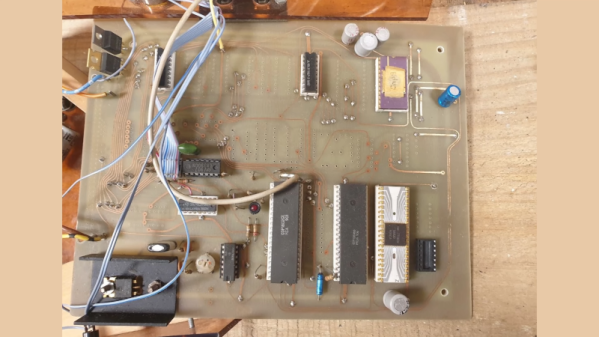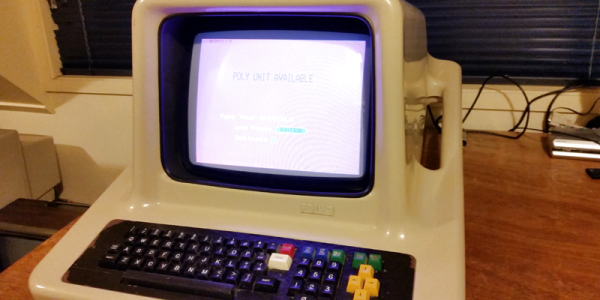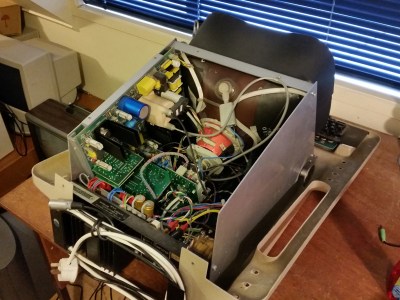Hardware hackers of a certain age likely got started with microcontrollers via the RCA 1802 — a relatively easy-to-use processor that was the subject of several excellent articles in Popular Electronics magazine back in the late 1970s. [Al’s Geek Lab] has an interview with [Hugh Anderson], who saw the articles and eventually designed the HUG1802, which may be the first microcontroller kit designed and sold in New Zealand.
The 1802 was very attractive at the time since it was inexpensive, static, didn’t require exotic voltages, and had a DMA system that allowed you to load software without complex ROMs. He initially marketed a kit unsuccessfully until an Australian company convinced him to create a proper PC board — the resulting kit was sold to about 100 customers.
The HUG1802 reminded us somewhat of the Quest Super Elf since it had a keypad, a cassette interface, and even a TV output. The 1802 had a DMA-enabled chip that made crude memory-mapped video output. The computer eventually morphed into the ETI 660, which they talk about at the end of the interview.
A lot of people built 1802 computers back in those days. If you don’t have an 1802, but you have an Arduino… ell, there’s always emulation.
Continue reading “New Zealand’s First Microcomputer May Be This 1802”

















